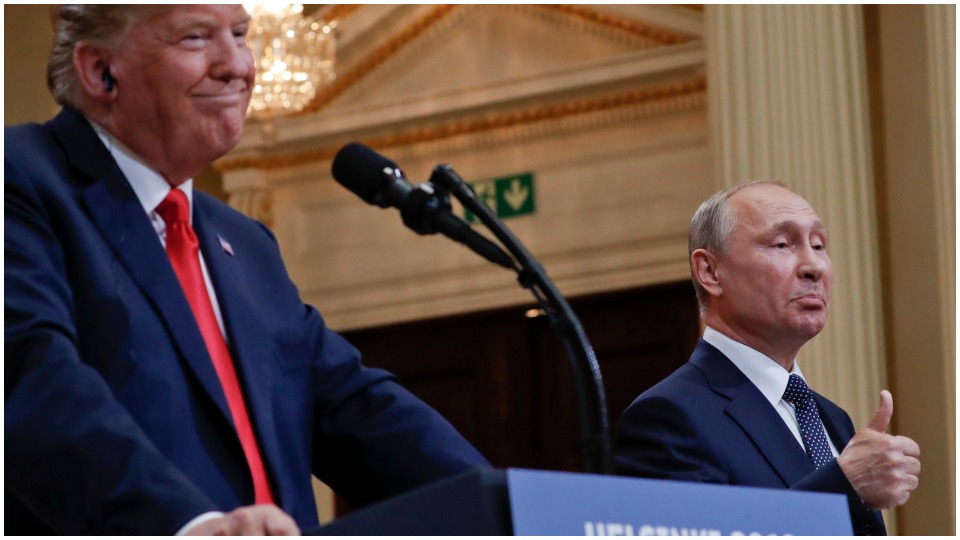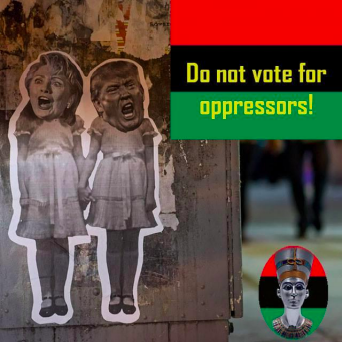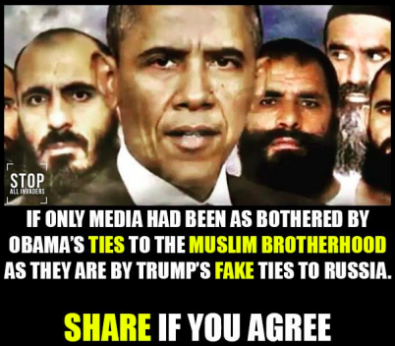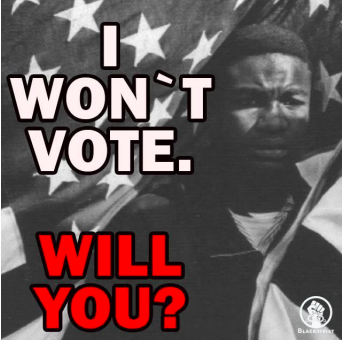
WASHINGTON—The extensive Russian disinformation campaign against the U.S. voting system and, later, to elect GOP presidential nominee Donald Trump, began in 2012 and continued even after Trump won in the Electoral College, a pair of U.S. Senate investigative reports show. And starting in 2017, its target was Special Counsel Robert Mueller.
Summaries of the reports, along with a separate section discussing how the Russians deliberately targeted African Americans with a specialized disinformation campaign designed to discourage them from voting in 2016, were revealed this week by the Washington Post, in advance of their planned release by the Senate Intelligence Committee on Dec. 21.
But all the reports, including the special one on the targeting of African Americans, “New Knowledge – Disinformation,” are already online. A second report from an internet investigations team at Oxford University entitled “The IRA, Disinformation, Social Media and Political Polarization in the United States, 2012-18,” has also been made available in advance of the Senate’s release.
A multi-pronged attack on U.S. democracy
Both reports focus on the sham corporation the Russians established to run the operation, the St. Petersburg-based Internet Research Agency (IRA). The IRA was set up by Russia’s main foreign intelligence service, the GRU, to misinform U.S. voters and disrupt the election, the Senate reports say. The GRU, which is run by the armed services, is the Russian equivalent of the CIA.
“Broadly, Russian interference in the U.S. presidential election of 2016 took three distinct forms, one of which is within the scope of our analysis,” the “Disinformation” report says. One Russian attack was “attempts to hack online voting systems,” which the Senate panel previously revealed.
A second was “a cyber-attack targeting the Democratic National Committee, executed by the GRU, which led to a controlled leak via WikiLeaks of email data related to the Clinton presidential campaign team.”
The third was “a sweeping and sustained social influence operation consisting of various coordinated disinformation tactics aimed directly at U.S. citizens, designed to exert political influence and exacerbate social divisions in U.S. culture,” the main report says.

The Russians used every social media platform they could find for their disinformation and disruption, including Facebook, Twitter, Google, Pinterest, Gab, LiveJournal, and others. They even infiltrated the Pokémon game.
And they were successful in reaching consumers: Readership of their posts reached at least 263 million on the two biggest platforms alone.
African Americans were a particular target of the disinformation campaigns, the separate report adds.
The Russian operations continued even after Trump won, as they added disinformation about Mueller and his investigation of whether there are actual election ties between the Trump campaign and the Russian state.
The disinformation campaign started on Twitter in 2013 targeting Russia’s own citizens. After a year and some initial success there, the IRA spread it to other social platforms—and to the U.S.
“For years, Russia has leveraged social media to wage a propaganda war,” leading to “a multi-year campaign to manipulate and influence Americans, exploiting social and political divisions,” the IRA report says.
“The scale was massive — reaching 126 million people on Facebook, posting 10.4 million tweets on Twitter, uploading 1,000+ videos to YouTube, and reaching over 20 million users on Instagram.”
Boosting Trump, trashing his foes
The disinformation campaign was also multi-faceted. One facet boosted Trump. A second trashed Clinton. The third was split into platforms and pages targeting specific groups, either boosting them—the Christian right and similar groups—into going all-out for Trump, or spreading lies and disinformation to get African Americans, Latinos, LGBTQ people, and other progressive voting blocs to sit out the election.
One video, designed to inflame Trump’s supporters and get them to the polls, showed a reported Muslim leader endorsing Clinton.
The Russian disinformation often got personal. One Russian tweet showed a picture of Chelsea Clinton, as a bride, posing with her parents at her wedding, along with a picture of Donald Trump Jr. after meeting a Russian operative.
“Don Jr. went to a pointless meeting. Chelsea stole donations to Haiti to pay for her wedding. Nice comparison,” the tweet read.
The Russians’ covert backing of Trump started early, during the presidential primaries, as a combination of pro-Trump messages and anti-Trump disinformation designed to take down his prime Democratic foe, Hillary Clinton, while also boosting her top Democratic opponent, Sen. Bernie Sanders, Ind-Vt.

But the Russians also spread disinformation about Trump’s primary foes, including GOP Sens. Ted Cruz of Texas, Lindsey Graham of South Carolina, and Marco Rubio of Florida, as well as former Florida Gov. Jeb Bush and Dr. Ben Carson, now a Trump cabinet officer.
After Sanders lost the Democratic nomination to Clinton, the IRA kept up its fusillade of anti-Clinton disinformation and attacks—including coordinating the WikiLeaks disclosure of Clinton’s and Democratic e-mails—while also occasionally boosting Green Party presidential nominee Jill Stein.
And after Trump won the election, the Russians switched to supporting him by trashing Mueller.
“Soon after the November 2016 election, investigative journalism began to uncover evidence of both the IRA’s social influence and the GRU’s hacking operations,” the New Knowledge report says.
“As articles began to emerge about election interference—pointing the finger at Russia—the IRA didn’t shy away or ignore it. It used derision and disparagement in content targeting the right-leaning pages” it had erected “to create and amplify the narrative that the whole investigation was nonsense, that (then-FBI Director James) Comey and Mueller were corrupt, and that the emerging Russia stories were a ‘weird conspiracy’ pushed by ‘liberal crybabies.’
“As facets of the investigation trickled out over 2017, the right-targeted accounts justified, dismissed, normalized, and redirected.”
Black voters heavily targeted
“The most prolific IRA efforts on Facebook and Instagram specifically targeted Black American communities and appear to have been focused on developing Black audiences and recruiting Black Americans as assets,” the New Knowledge report says.
Other pro-Democratic minority communities were the subject of few internet pages and channels, but African Americans were heavily targeted. The IRA set up domain names in an attempt to attract them—blackvswhite.info, blackmattersusa.com, and blacktolive.org. That second domain name is similar to the real “Black Lives Matter” campaign.

It also posted anti-Clinton videos for YouTube channels, such as “Cop Block US” and “Don’t Shoot.” Another 1,060 videos discussed the Black Lives Matter campaign, police shootings of African Americans, and police abuses.
“While other distinct ethnic and religious groups were the focus of one or two Facebook Pages or Instagram accounts, the Black community was targeted extensively with dozens; this is why we have elected to assess the messaging directed at Black Americans as a distinct and significant operation,” the IRA report says.
Through social media, the Russians also often recruited unwitting African Americans for their videos and other disinformation, it added.
The campaign hasn’t stopped
The reports treat the targeting of Mueller only briefly. “There were significant IRA mentions that aimed to increase or erode support for prominent political figures including” WikiLeaks Clinton e-mail leaker Julian Assange, former FBI Director Comey, and Mueller.
“These mentions were largely an attempt to shape audience perception during a relevant news cycle,” the New Knowledge report says.

Interestingly, the New Knowledge report says that—aside from boosting Trump and trashing his foes—the IRA’s disinformation campaign was not overtly political, until after Trump was inaugurated in January 2017. Then, it changed.
“Political content appeared in the IRA accounts on Facebook. The post with the most engagement with Donald Trump emerged after the election, on January 23,” which was also after Trump took over the Oval Office.
“It was a conspiracy theory about President Barack Obama refusing to ban (Islamic) sharia law under the 1952 McCarran-Walters Act, encouraging Trump to take the action.” That law was originally passed at the height of “anti-Communist” McCarthyite hysteria, though the report does not say so.
The conspiracy theory Facebook posting got “312,532 organic shares on the Stop All Invaders page” and has since been reshared and reposted by “several authentic accounts,” getting even more attention, all the way through November 2018, the report adds.
After detailing some of the IRA’s continuing interference, including one with a fake Arabic pro-Russia page, the main report concludes with a warning: “With at least some of the Russian government’s goals realized in the face of little diplomatic or other pushback, it appears likely the United States will continue to face Russian interference for the foreseeable future.”












Comments